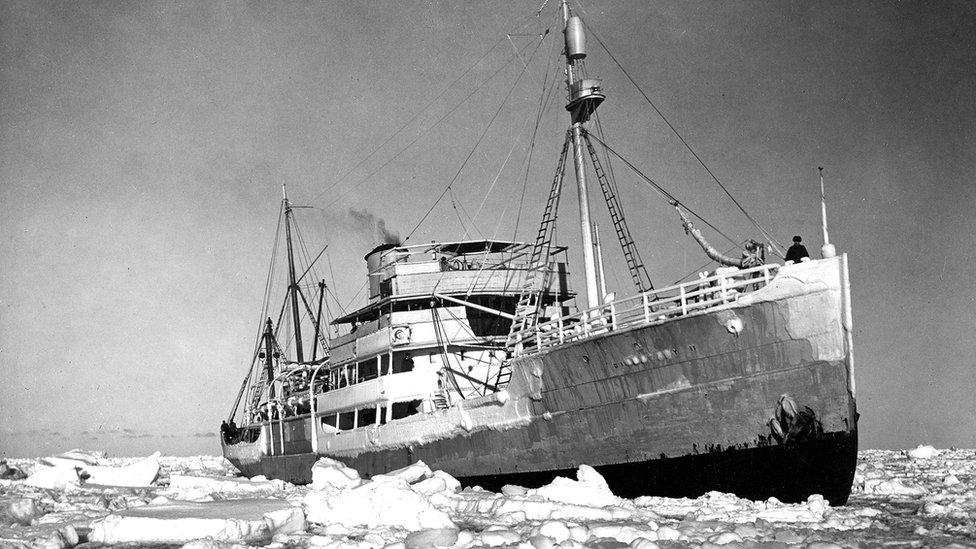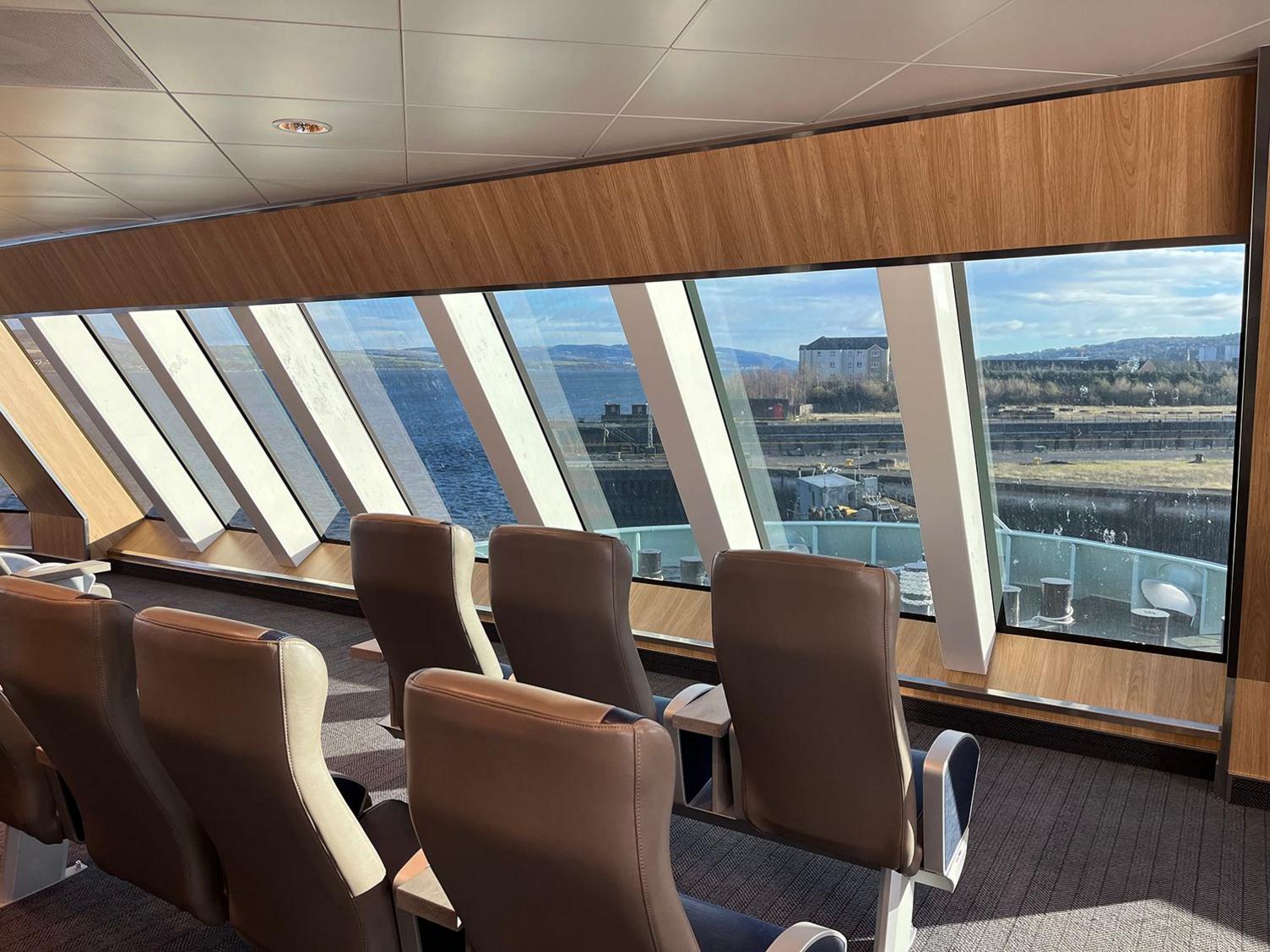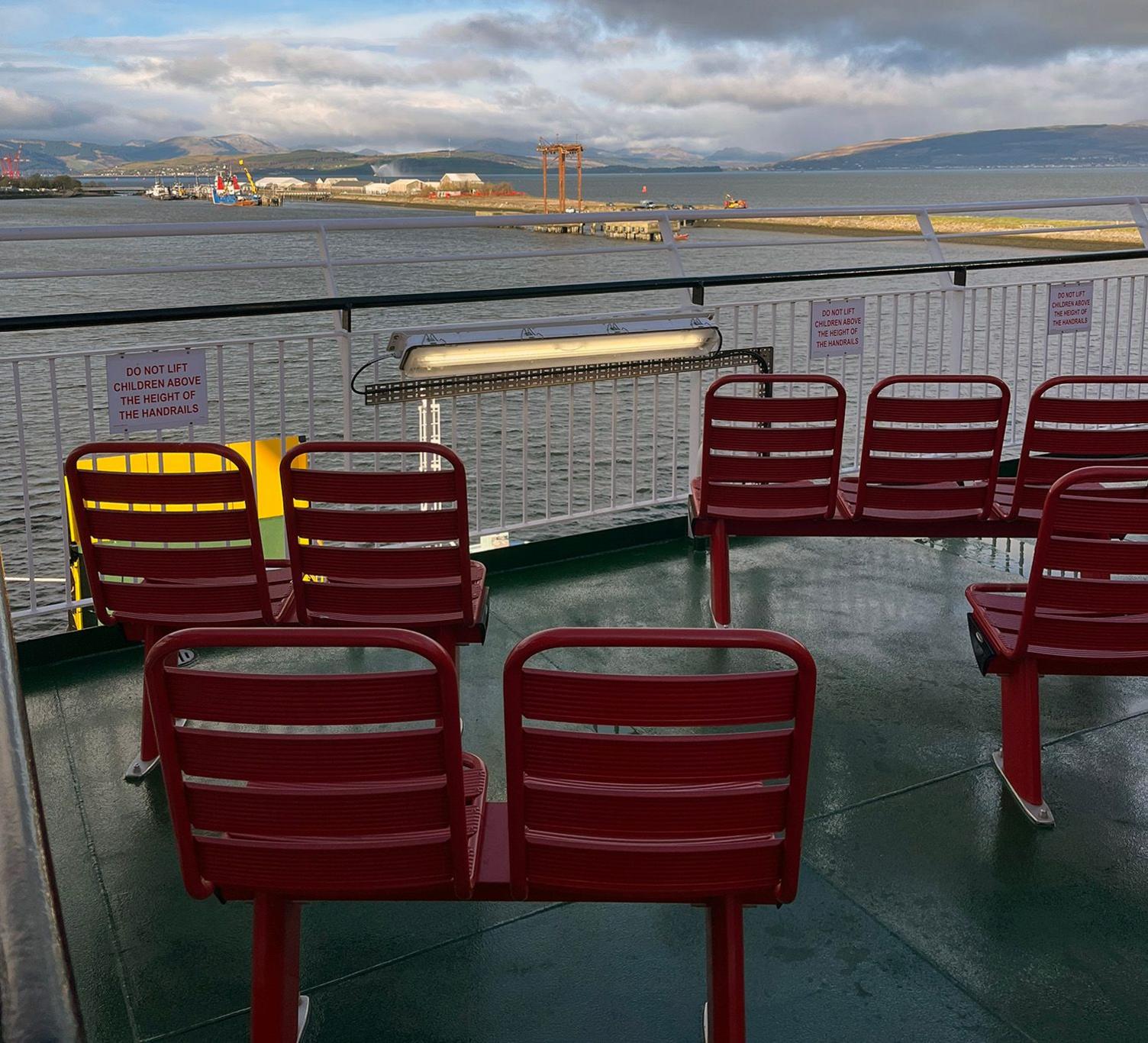Ferries saga ship Glen Sannox finally delivered

MV Glen Sannox, in the Clyde at Greenock, during its recent sea trials
- Published
The long-delayed ship at the centre of Scotland's ferries saga has been handed over by the Ferguson shipyard, exactly seven years after it was launched.
MV Glen Sannox, destined for CalMac's Arran route, is the first new large vessel for the west coast ferry fleet in nearly a decade.
The ferry operator will now conduct several weeks of crew familiarisation trials before the ship carries its first passengers in January.
Glen Sannox was originally due for delivery in 2018 but has faced major challenges in design and construction, sparking the longest-running political controversy of the devolution era.
Costs have risen from an initial contract price of £97m to more than £400m, including £45m of government loans that were never fully recovered.
The handover comes seven years to the day since the ship was famously launched by former first minister Nicola Sturgeon with painted-on windows and plywood funnels.
Why was Glen Sannox so hard to build?
- Published13 January
Were Scotland's new gas-powered ferries a bad choice?
- Published20 April 2024
Since then the Port Glasgow shipyard has faced administration, nationalisation - and years of frustrating setbacks as it grappled with complex engineering challenges to complete the dual-fuel ship.
The delays also disrupted vessel replacement plans, with CalMac now under huge pressure to maintain services with an ageing and increasingly unreliable fleet.
Alex Logan, convener for the GMB union who has worked at the Inverclyde shipyard since he was 16, said it was a big day both for the yard - and Scotland's island communities.
"It's been a long hard struggle - everyone knows this, the troubles we've had with Glen Sannox - but we've finally got it over and we're looking forward to the islanders getting a vessel," he said.
"I can only apologise on behalf of the workforce - but it's not any fault of the workforce. It was bad planning, bad design - but eventually we're here and I'm glad."
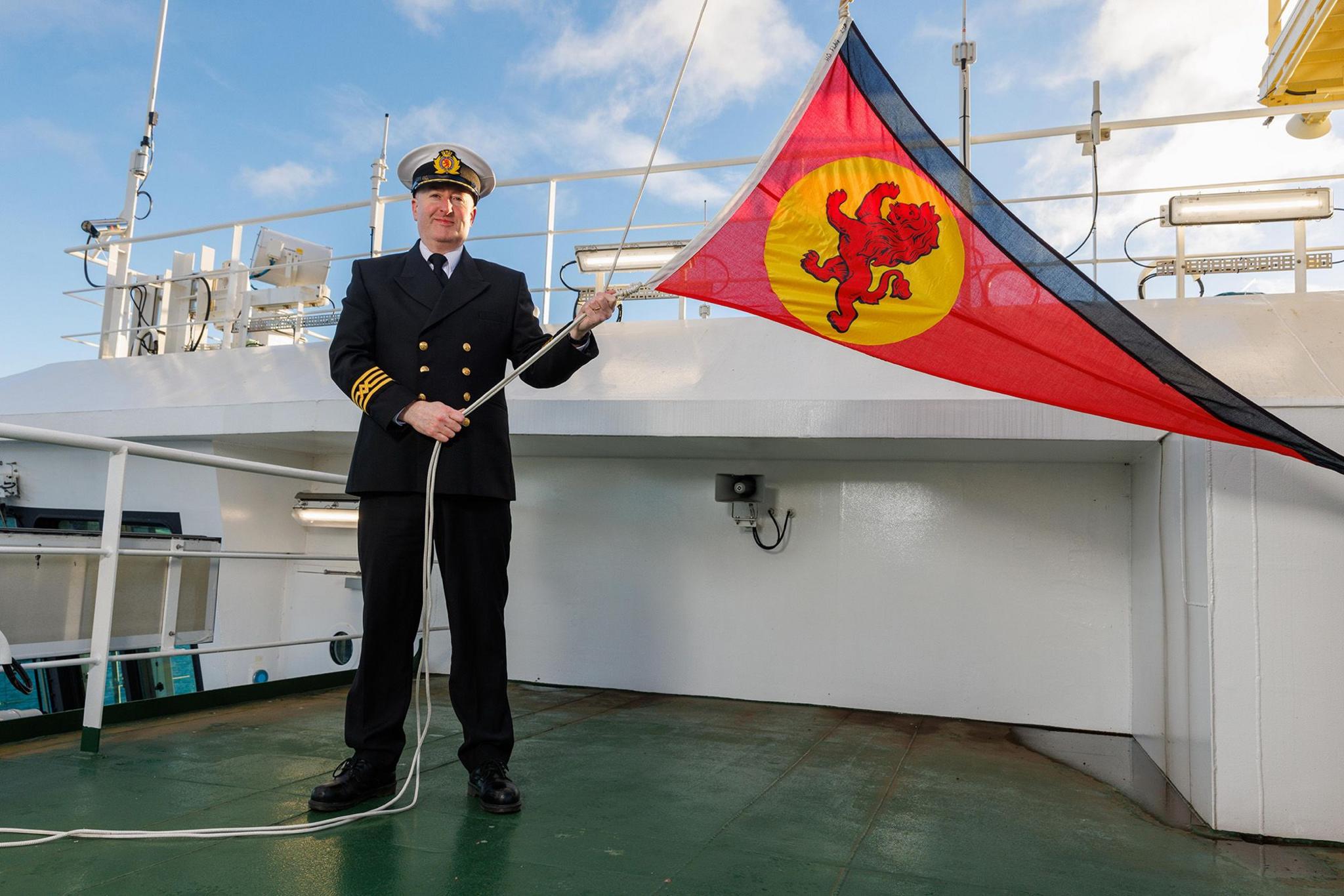
The new Master of Glen Sannox, Michael Mackinnon, raises CalMac's house flag on board the ship for the first time
The 102.4m (336ft) vessel was formally handed over to CMAL, the publicly-owned company which owns Scotland's west coast ferries and leases them to CalMac.
Once all the paperwork was completed, the new Master of Glen Sannox, Michael Mackinnon, boarded the ship and raised CalMac's house flag for the first time.
Interim chief executive of Ferguson Marine, John Petticrew, declared the ship "a fine vessel, well capable of providing decades of service for islanders and visitors".
He added: "There is no doubt it’s been a long haul getting to this point, and we sympathise with ferry users who have waited so long to see this day.
"Looking to the future, our ability to adapt, learn from, and successfully overcome considerable challenges demonstrates the resilience and skills of our workforce, and will provide huge value as we tender for future contracts."
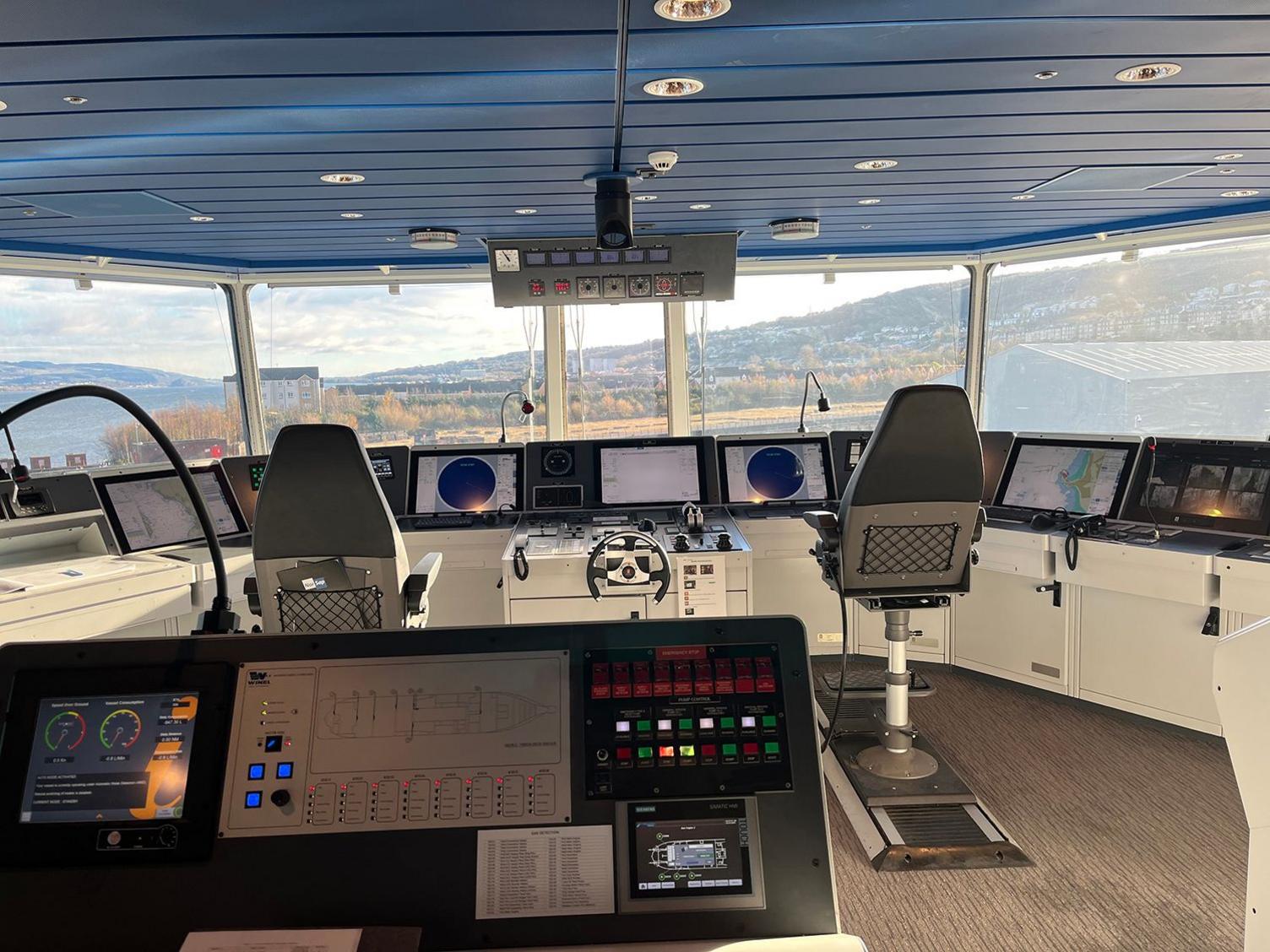
Image caption, A first look inside the finished Glen Sannox - starting with the bridge
1 of 5
Deputy First Minister Kate Forbes said it was a milestone to be celebrated.
"The Glen Sannox will provide resilience to the fleet delivering vital lifeline services to islanders and I am encouraged that the Scottish government’s wider programme to procure six new ferries by 2026 has taken another major step forward," she said.
CalMac's interim chief executive Duncan Mackison said the ship would benefit the entire network, giving the operator more flexibility in deploying vessels.
He added: "Our crew are excited to sail her and will now get to work to complete operational trials and familiarisation work in the next few weeks before she enters service for Arran."
Scottish Conservative transport spokeswoman Sue Webber accused the Scottish government of having "betrayed islanders at every turn and squandered an eye-watering amount of taxpayers’ money in delivering the Glen Sannox".
She added: "Seven years ago today Nicola Sturgeon promoted this ferry to much fanfare, only for it to be then embarrassingly revealed that it had painted-on windows and was clearly nowhere near ready for service.
“Now islanders must finally hope that this lifeline ferry will be setting sail soon. However, SNP ministers should not be patting themselves on the back at this long-awaited news.
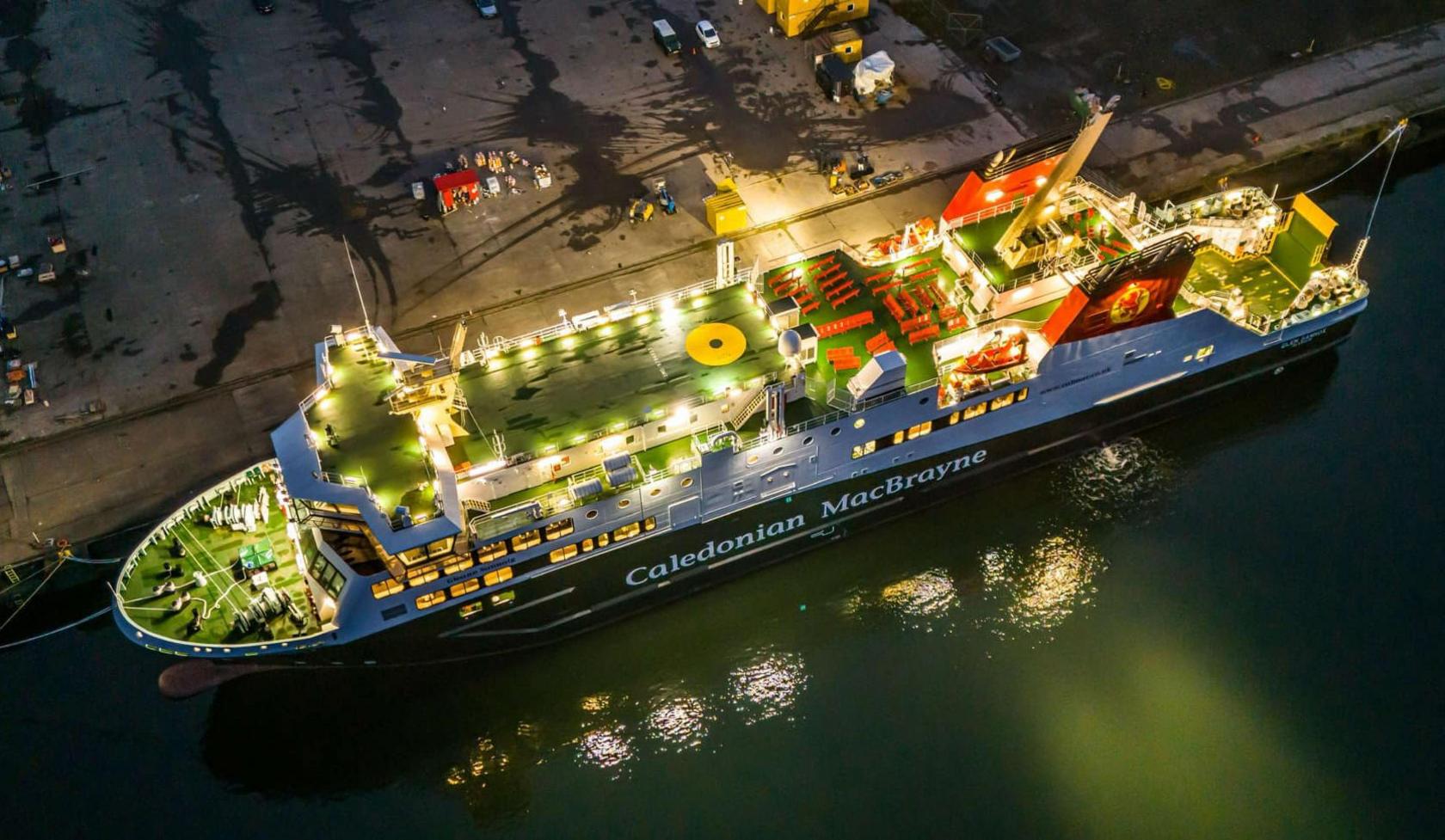
Glen Sannox is expected to carry its first passengers in January
Glen Sannox is the second largest ship to join the CalMac fleet - and the first ferry ever built in the UK capable of running on liquefied natural gas (LNG).
CalMac, which is also owned by the Scottish government, will now spend six-and-a-half weeks conducting crew familiarisation and harbour berthing trials.
The ship will also begin its annual maintenance cycle, with two weeks of inspections scheduled for early December, before carrying its first passengers from Troon to Brodick on Arran, probably in mid-January.
Construction of Glen Sannox's sister ship, Glen Rosa, is proceeding more smoothly, and it is due to be delivered in September next year.
Procurement disaster
The order for the two ferries has become one of the biggest public procurement disasters since power was devolved to Holyrood.
Glen Sannox was originally due for delivery in May 2018, with Glen Rosa expected to follow two months later, but from the outset the build was plagued by design challenges and disputes over rising costs.
The contracts were awarded in 2015, a year after Ferguson Shipbuilders, the last commercial yard on the River Clyde, was rescued from administration by successful businessman Jim McColl, in a deal brokered by then first minister Alex Salmond.
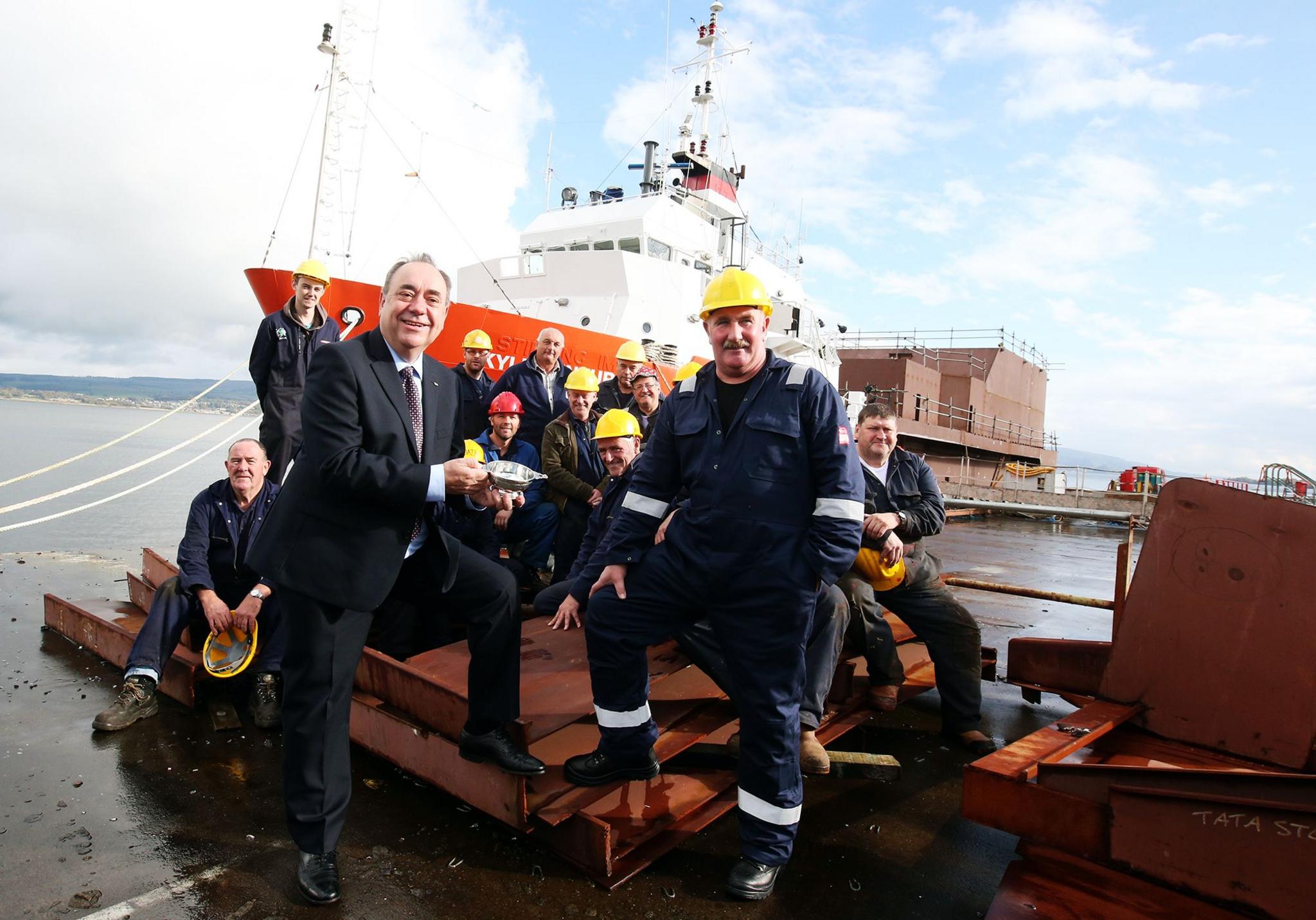
Former First Minister Alex Salmond, seen here with Ferguson workers in 2014, brokered a deal to rescue the shipyard
While the ships were bigger and more complicated than anything previously attempted by the small Port Glasgow shipyard, the new owners were promising new investment and were confident they could deliver them.
But relations with the yard's new management and CMAL quickly soured with both sides blaming each other for problems that developed.
Jim McColl claimed a flawed concept design by CMAL, repeated change requests and interference led to unforeseen costs.
CMAL maintained McColl's company had simply proved unable to design and build the ships, and there was no basis in the contracts to pay any more.
The stalemate saw the firm run out of money - and Ferguson's fell back into administration in August 2019.
It was subsequently nationalised, saving 350 jobs, but the new management under "turnaround director" Tim Hair struggled to resolve the difficulties.
He left the firm in early 2022, having been paid nearly £2m for 18 months work, with the two ships far from complete.
His replacement David Tydeman described the challenges of fitting the LNG system into the tight machinery spaces as more complex than building a Type 26 frigate.
Mr Tydeman was himself subsequently sacked by the Ferguson board earlier this year after another delivery deadline was missed.
Related topics
- Published13 January
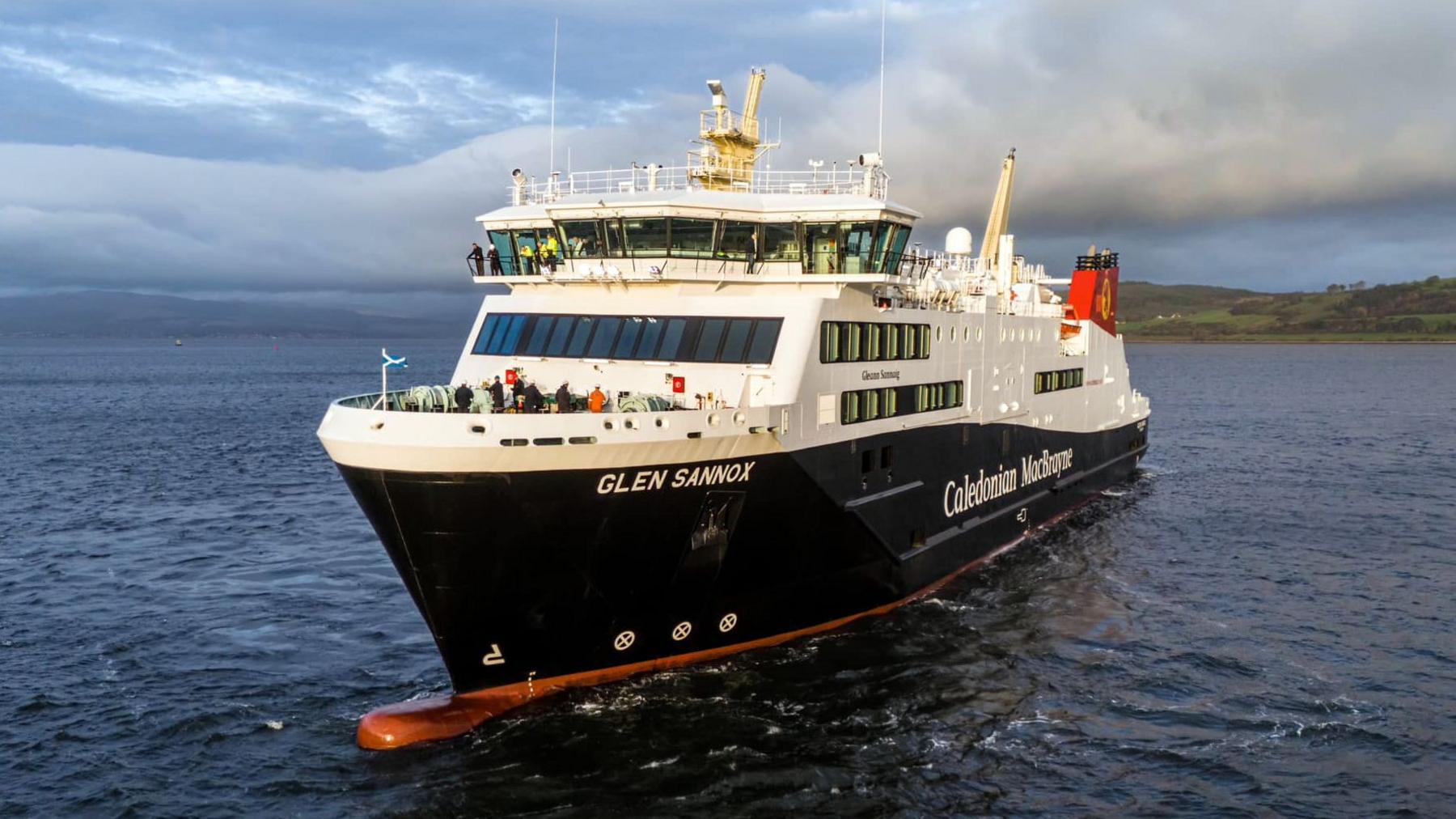
- Published20 April 2024
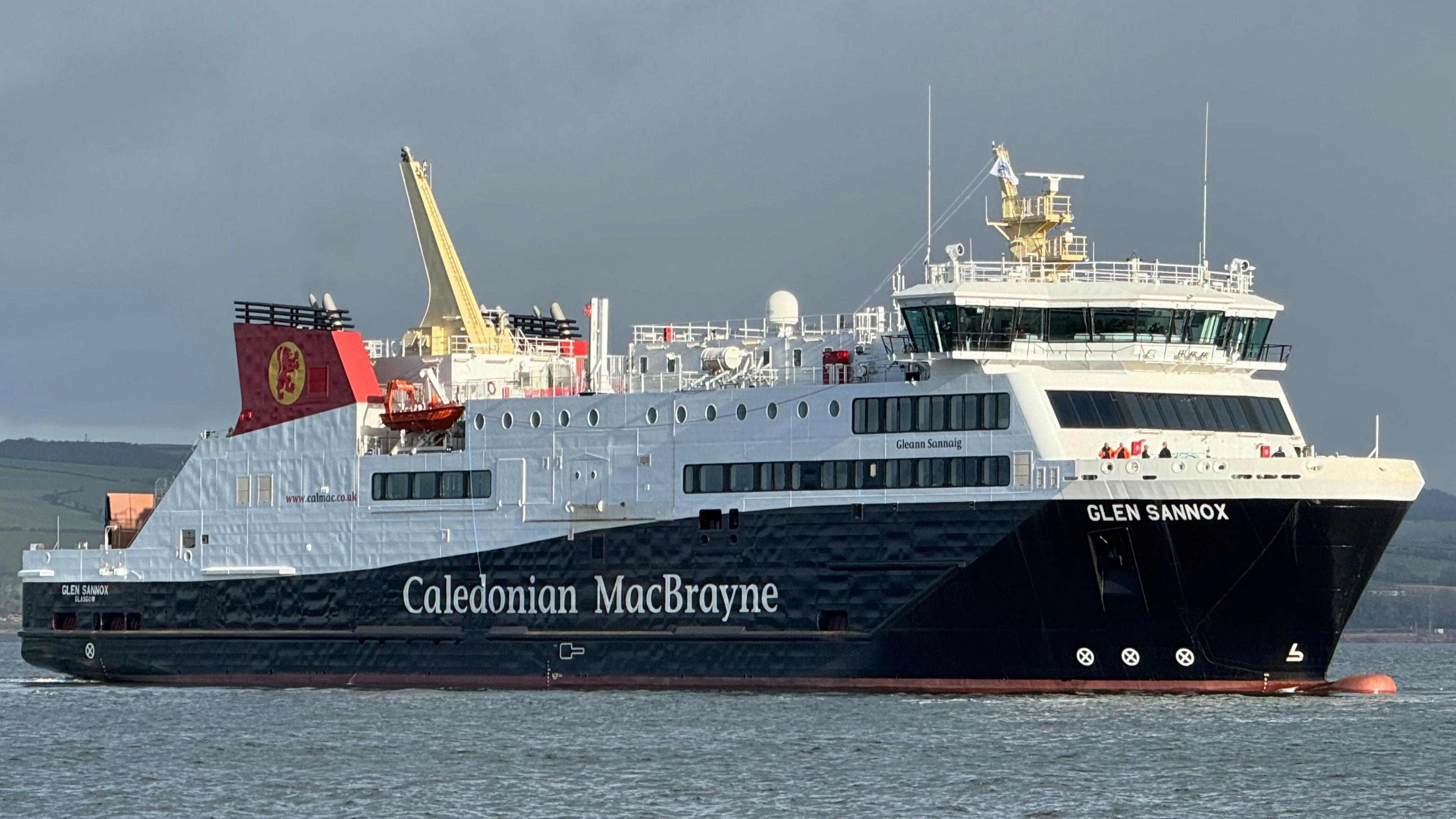
- Published26 November 2023
